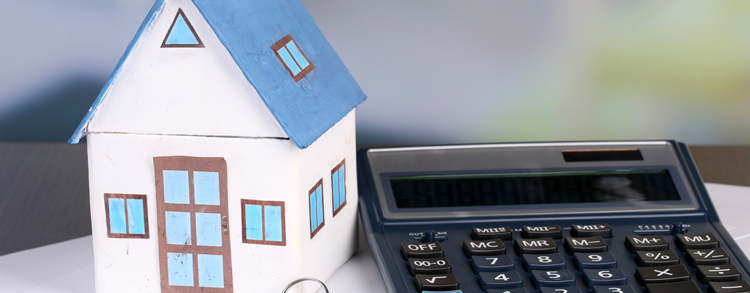Mortgage Comparison Guide for First‑Time Homebuyers
Written by:
Mike Tassone
Mike is a Co-Founder and Chief Operating Officer of Own Up. He has expertise in all areas of residential lending, having led operations for a top 40 lender in the United States.
See full bio
Fact Checked by:
Patrick Boyaggi
Patrick Boyaggi
CEO an Co-Founder
Patrick is the Co-Founder and CEO of Own Up. He has a wealth of experience and knowledge as a mortgage executive.
See full bio

Ah, buying a home. So many things to consider, such as location, size, and of course, how you are going to pay for it. Most people need a mortgage to buy a home, and with so many options out there, it can be overwhelming to decide which one is right for you.
But how to get started? Use this first-time home buyers mortgage comparison guide to help you make the best choice for your needs.
Fixed-rate Mortgage vs. Adjustable-rate Mortgage (ARM)
When shopping for a mortgage, it's important to understand the two main types of mortgages: fixed-rate and adjustable-rate.
Fixed-rate Mortgages
A fixed-rate mortgage locks in your interest rate and monthly payment for the entire term of the loan, providing stability and predictability. This could be a great option for those who plan on staying in their home for a long time and want to know exactly how much their monthly payment will be on a consistent basis.
Example of a 30-year fixed rate mortgage
Let’s say your monthly payment for your loan principal and interest totals $2,500 per month. The amount you pay to the lender would stay the same at $2,500 each month for the entire 30 years of the loan.
Adjustable-rate Mortgages
An adjustable-rate mortgage (ARM) carries an interest rate that can change over time, usually after an initial fixed period. This means that your monthly payment could go up or down depending on market conditions.
ARMs may be ideal for those who plan on moving or refinancing in the next few years or for those who want a lower initial payment. However, keep in mind that an adjustable-rate mortgage can come with more risk and uncertainty, as you cannot predict how the market will fluctuate in the future.
Example of a 7/1 ARM
There are different types of ARMs, but let’s use a 7/1 ARM as an example. In this case, you still pay your mortgage over a 30-year term. However, the mortgage rate will only remain fixed for seven years. After that, the lender will adjust the rate every year for the remaining 23 years.
More specifically, let’s say your monthly payment for your loan principal and interest initially totals $2,500 per month. This monthly payment will remain $2,500 per month for the first seven years of your loan. After that, your interest rate will fluctuate once per year. Your monthly payments could shoot up to $2,800 per month, or potentially even decrease a bit. The point is this: Every 12 months for the last 23 years of your loan, your mortgage payment could change, making it more difficult to budget if you end up keeping the property for longer than the fixed-term.
Other Cost Considerations
Costs related to a property that could change over time include property taxes, HOA payments (if you buy a condo), or private mortgage insurance. These costs are separate from your mortgage and interest payments. It’s important to keep these expenses in mind as part of your total cost of ownership when purchasing a home.
Ultimately, the decision between a fixed-rate or adjustable-rate mortgage will depend on your personal financial situation, long-term goals, and risk tolerance. It's important to carefully evaluate your options and seek guidance from a mortgage professional to make the best decision for your unique needs.
Government-backed Loans vs. Conventional Loans
When comparing mortgages, one important factor to consider is whether you want a government-backed loan or a conventional loan.
Government-backed Loans
Government-backed loans are designed generally for two purposes:
One is to help people who might have trouble getting approved for a conventional loan, such as an FHA loan.
The other is to cater to designated groups, such as VA home loans for active military service members veterans.
These types of loans are insured by the government, which make them less risky for lenders, and can result in lower or zero down-payment requirements and more lenient credit score requirements.
There are different types of government loans, which you can read about in “A Guide to Buying Your First Home,” so be sure to research which types of government loans – if any – could apply to your situation.
Conventional Loans
Conventional loans, on the other hand, are not backed by the government and may require a higher down payment and a higher credit score. However, conventional loans offer more flexibility when it comes to the type of loan and the terms of the loan. Borrowers can choose between fixed-rate or adjustable-rate mortgages and have a range of term options, typically ranging from 10 to 30 years.
When deciding between a government-backed loan or a conventional loan, it's important to consider your individual financial situation, long-term goals, and risk tolerance. A mortgage professional can help you evaluate your options and choose the loan that's right for you. Whether you opt for a government-backed loan or a conventional loan, be sure to shop around and compare offers from different lenders to ensure you're getting the best deal.
Closing Cost & Fees
When comparing different mortgage options, it's important to pay attention to the costs and fees associated with each loan. Closing costs, for example, can add up quickly and may include a variety of fees such as appraisal and title fees. Some lenders may offer to cover some or all of these costs in the form of a lender credit, which typically increases the mortgage rate you get from them, while others may require you to pay them upfront.
Aside from closing costs, there may be additional fees associated with the loan, such as mortgage insurance and prepayment penalties. These fees can vary depending on the lender and the type of loan. Prepayment penalties, for instance, while rare, may be charged if you pay off the loan early, while mortgage insurance is typically required if you make a down payment of less than 20% of the purchase price.
It's important to carefully review all of the fees and costs associated with each loan you're considering, and factor them into your overall decision-making process. By doing so, you can get a clearer understanding of the total cost of the loan, and choose the option that makes the most financial sense for your situation.
Bottom Line
When it comes to buying your first home, choosing the right mortgage is a big decision. By comparing the different types of mortgages and understanding the associated costs and fees, you can make an informed choice that works for your unique situation.
Whether you choose a fixed-rate or adjustable-rate mortgage, a government-backed loan or a conventional loan, or something in between, the most important thing is to find a mortgage that you can comfortably afford and that meets your needs for the long term.


